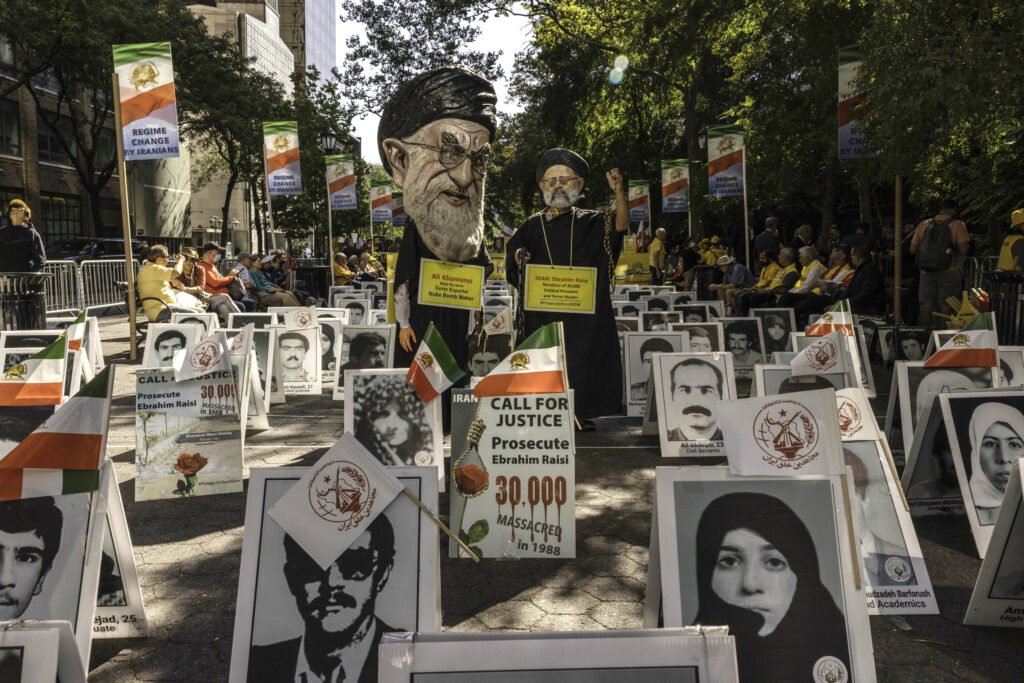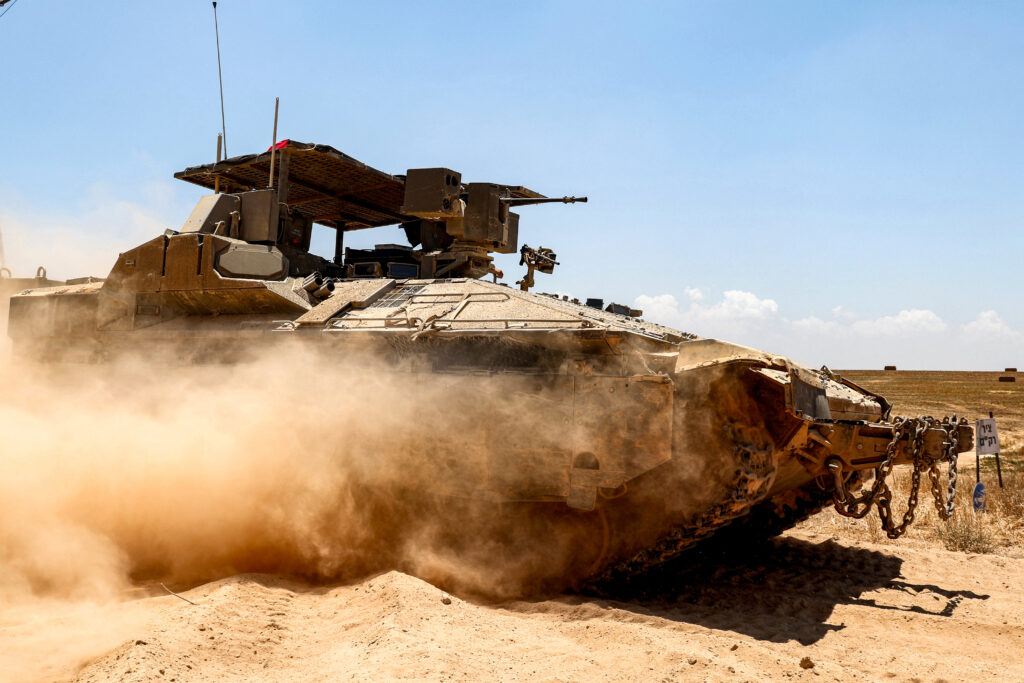Protests, Multiple Crises Pose Grave Challenge to Iranian Regime
- - October 26, 2022

By Gyorgy Busztin, Visiting Research Professor, MEI-NUS
Protests in Iran over the death of Mahsa Amini while in the custody of the morality police have entered their sixth week, without losing momentum. Demonstrations across the country continue to be driven by a mix of youth, women, and, increasingly, workers in several sectors who stage wildcat strikes.
For a short time, the regime seemed to allow space for protesters to vent, but that initial patience is wearing thin, and the repression is getting more brutal, claiming over 200 victims, with many more injured, and thousands arrested. The revolt in Tehran’s notorious Evin prison, which resulted in the death of at least eight detainees, was an indication that the unrest has spread far and wide. Indeed, on 25 October, press reports emerged of armed police intervention to break up protests outside a girls’ school in Tehran.
Police and the Basij paramilitary militia have used techniques reminiscent of those used to quell previous large-scale protests: Intimidation, tear gas, and live ammunition. Injured protesters avoid hospitals for fear of arrest. High-profile personalities such as athletes, actors, and intellectuals have come under pressure to renounce their support for the protest movement. Especially brutal treatment has been meted out to minority protesters in the Kurdish, Azeri and Baluchi areas of Iran, where no reliable tally of victims of government repression is available. In Zahedan, a cleric called out Supreme Leader Ayatollah Ali Khamenei for the killing of scores of demonstrators by security forces.
To offset its brutality, the regime has talked about opening a dialogue with the protesters, but such promises have no effect, and do not sway public opinion. The government also continues to blame outside elements, particularly the United States and Israel for “fomenting the disorder”, and its narrative seems to set the stage for even harsher repression – presumably involving the dreaded Islamic Revolutionary Guard Corps (IRGC) – should protests get out of control.
“Women, life, freedom” remains the movement’s rallying cry, though this is increasingly interspersed with calls for an end to the regime and Ayatollah Khamenei. Removing and disfiguring portraits of the Supreme Leader, and even Ayatollah Ruhollah Khomeini, reflect an anger and determination unmatched during previous protests.
The regime’s drive to quell the protests has coincided with adventurism abroad, this time in Ukraine, where Iran has supplied Russia with kamikaze killer drones, and has sent its personnel to train Moscow’s soldiers. This has sparked angry reactions in Western capitals, and will likely deepen Tehran’s isolation from the rest of the world.
Iran has staunchly denied its arms sales to Russia against all manifest evidence, but the fallout is becoming clear. One independent Iranian analyst who spoke to BBC Persia has said that the Tehran-Moscow partnership has left talks over a renewed nuclear deal at a dead-end, as Western partners refuse to be seen parlaying with the regime while it carries out a bloody campaign against protesters at home and assists aggression abroad.
Despite mounting evidence that the regime has been hurt by the protest movement, it is unlikely that the wound is mortal. The Islamic Republic still has vast untapped resources it can tap on if it senses that the protests are getting out of hand. Thus far, it has only launched piecemeal attempts to quell demonstrations, and is relying on a mix of violence and staged shows of support — busing in plainclothes security personnel or mobilising villagers to give the appearance of popular appeal — to keep the unrest in check.
But regime stalwarts are all too aware of the stakes. If a tipping point is reached, a natural consequence is the thirst to settle scores, which would be consequential for them. This keeps the ruling elite and the security apparatus serving it cohesive. Nor is economic collapse imminent, despite the dire straits the country is in. Ongoing oil sales to partners who flout American and international sanctions, primarily China and India, guarantee the income needed to cover the regime’s most essential imports. The daily economic hardships experienced by the populace may, in fact, be seen as advantageous by the government: It is a valuable distraction, keeping people concerned with their daily existential struggles, and off the street.
For now, therefore, the protest movement remains a visceral, but sporadic, pushback against a repressive regime. But even if it fails to move the needle, the 2022 protest movement reveals the unsustainability of a regime that relies on raw force to cling to power, and denies its people basic rights or hope for a better future.
The regime may be able to buy time, but will be hard-pressed to recover from the legitimacy-cum-reputational disaster the protests have caused. The demonstrations came after a presidential election which decisively erased the last vestiges of pluralism — the Guardian Council eliminated all opposition candidates, leading to the lowest-ever turnout — and thus revealed the system’s Achilles Heel: Iranians now see the country as one ruled by an uncontested autocracy with no hope of systemic redress.
The administration of President Ebrahim Raisi, an extremely unpopular arch-conservative tainted by gross human rights violations, is not only the most reactionary of all of theocratic Iran’s previous governments, but also staunchly believes in silencing all dissenting voices and returning Iran to the religious orthodoxy of the Khomeini era. This makes the protests a particularly bitter, “make or break” stand-off between Iran’s rulers and those who want a modern government that can end the country’s pariah status and cultivate ties with the rest of the world, instead of a theocratic regime that can only count other isolated states among its friends.
Other dangers remain for Iran. The IRGC, the system’s fist in and outside the country, remains bent on regime preservation by any and every means at its disposal. A military, security, and economic force, it holds virtually unopposed sway over the entire country, and calls the shots, even as spiritual-ideological primacy nominally remains with the Supreme Leader. The passing of Ayatollah Khamenei, who is reportedly ailing, may effect an overhaul of the system into a pure military dictatorship. The protests could precipitate such an eventuality.
Whatever the case, the confluence of multiple crises — burgeoning protests, a bloody crackdown, nuclear talks at a standstill, Tehran’s alliance with Russia against Ukraine, and a looming succession crisis — have brought the regime to an inflection point. The fate of the protest movement remains unpredictable, but the longer it continues, the more it erodes the foundations of the theocratic regime. The violent repression has pushed the country to breaking point. It may have saved the system for the moment, but has also failed to break the will of protesters.
An indication of what the future holds came on 26 October, when the “Arbein” (the end of the traditional 40-day mourning period) for Mahsa Amini took place. Across the country, tens of thousands demonstrated, chanting their mantra, “Women, Life, Freedom”, and vilifying the regime, and Supreme Leader. They were again met by violence, including live ammunition.
The large-scale demos took place despite warnings from the government the day before. Iranians’ refusal to back down in the face of threats has only demonstrated that the crackdown has not deterred them, and, may, indeed, add fuel their discontent.
Image Caption: People protest against Iranian President Ebrahim Raisi demanding his prosecution during a rally in New York City on September 21, 2022, amid the 77th session of the United Nations General Assembly. (Photo by Alex Kent / AFP)
About the Author
Dr Gyorgy Busztin is Visiting Research Professor at the Middle East Institute, NUS.
A career diplomat and an academic, he served, between 2001 and 2011, as Hungary’s ambassador to Indonesia and subsequently, Iran. In 2011, Dr Busztin was appointed deputy envoy of the United Nations in Iraq, responsible for the political, analytical, electoral and constitutional support components of the UN’s mission in Iraq. He served at the level of assistant secretary-general until October 2017.
Dr Busztin holds a degree in Arabic history from Damascus University, Syria and a Doctorate in Arabic language and Semitic philology from Lorand Eotvos University in Hungary. In addition to his native Hungarian, he speaks English, French, Arabic, Farsi/Dari (Persian), Malay (Indonesian) and Russian. He believes strongly in political and intercultural dialogue and has engaged leading politicians, intellectuals, religious leaders and representatives of civil society.
More in This Series
More in This Series
- Jean-Loup Samaan
- - July 11, 2024
- Aisha Al-Sarihi, Ehsan Rasoulinezhad, Jinseok Sung
- - June 20, 2024








